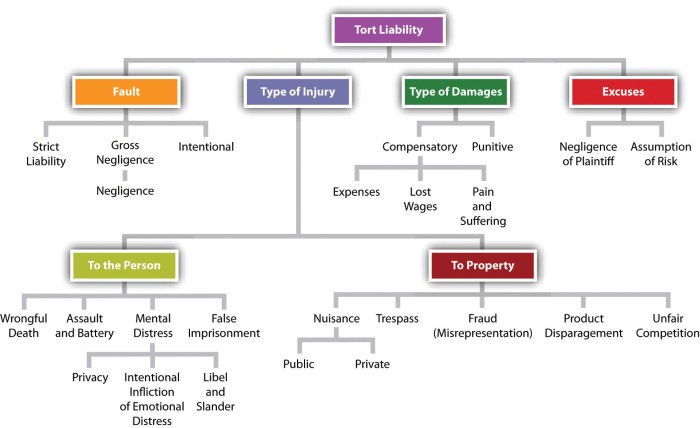
What is family law? It’s the legal framework that governs the most intimate aspects of our lives: marriage, divorce, child custody, and property division. Family law encompasses a wide range of legal issues that arise within families, and it’s designed to provide structure and support during times of change and transition.
From establishing the legal requirements for marriage to navigating the complexities of divorce proceedings, family law plays a crucial role in shaping the lives of individuals and families. It provides a system for resolving disputes, protecting the rights of children, and ensuring fairness in the distribution of assets and debts. This field of law is constantly evolving, adapting to changing societal norms and values.
Defining Family Law
Family law encompasses the legal rules and regulations that govern family relationships and the legal rights and responsibilities arising from those relationships. Its primary purpose is to establish a framework for resolving disputes and ensuring the well-being of family members, particularly children.
Key Areas of Family Law
Family law covers a wide range of legal issues, with some of the most common areas including:
- Marriage: This area of family law deals with the legal requirements for entering into a marriage, the rights and responsibilities of spouses, and the legal consequences of divorce or separation.
- Divorce: Divorce proceedings involve the legal dissolution of a marriage, including the division of marital property, spousal support, and child custody arrangements.
- Child Custody: This area of family law focuses on determining the legal and physical custody of children after a separation or divorce. It involves deciding who has the right to make decisions regarding the child’s upbringing and who has the primary responsibility for the child’s care.
- Child Support: Child support refers to the financial obligation of a parent to contribute to the costs of raising their child, including expenses such as food, clothing, housing, and education.
- Property Division: This aspect of family law addresses the division of assets and debts accumulated during a marriage upon separation or divorce. It includes the distribution of real estate, bank accounts, investments, and other assets.
Examples of Legal Issues Addressed by Family Law
Family law addresses a diverse range of legal issues that impact individuals and families. Here are some examples:
- Prenuptial Agreements: These agreements, made before marriage, define the division of property and other financial matters in the event of a divorce.
- Domestic Violence: Family law provides legal protection for victims of domestic violence, including restraining orders and other legal remedies.
- Adoption: This area of family law governs the legal process of becoming a parent to a child who is not biologically related.
- Paternity: Family law establishes procedures for determining the legal father of a child, which can be important for child support and custody issues.
- Grandparent Visitation: In some cases, grandparents may have the right to visit their grandchildren even if the parents are divorced or separated.
Marriage and Divorce
Marriage and divorce are fundamental aspects of family law, shaping the legal and social framework within which families are formed and dissolved. Understanding the legal requirements for marriage, the grounds for divorce, and the procedures involved in divorce proceedings is crucial for individuals navigating these significant life events.
Legal Requirements for Marriage
To enter into a legally recognized marriage, individuals must meet specific requirements established by law. These requirements ensure that the marriage is valid and binding.
- Age: Most jurisdictions require individuals to be of a certain age, typically 18 years old, to marry. Some exceptions may exist for individuals who are younger but have obtained parental consent or a court order.
- Capacity: Individuals must have the mental capacity to understand the nature and consequences of marriage. This means they must be mentally sound and capable of making informed decisions.
- Consent: Both individuals must freely and voluntarily consent to the marriage. This means there should be no coercion, fraud, or duress involved in the decision to marry.
- Relationship: In some jurisdictions, certain relationships, such as those between close relatives, may be prohibited from marrying.
- License: Most jurisdictions require individuals to obtain a marriage license before they can legally marry. This license typically involves a waiting period and may require a blood test or other medical examinations.
- Ceremony: The marriage must be solemnized by an authorized officiant, such as a judge, religious leader, or other official designated by the state.
Grounds for Divorce
Divorce is the legal dissolution of a marriage. The grounds for divorce vary by jurisdiction, but they typically include:
- Irreconcilable Differences: This is a common ground for divorce, where the parties simply cannot resolve their differences and have reached a point where they can no longer live together as husband and wife.
- Adultery: This ground for divorce involves the infidelity of one spouse.
- Desertion: This ground for divorce occurs when one spouse abandons the other without justification.
- Cruelty: This ground for divorce may be based on physical or emotional abuse, or other forms of conduct that make it impossible for the parties to continue living together.
- Substance Abuse: In some jurisdictions, substance abuse by one spouse may be a ground for divorce.
- Imprisonment: If one spouse is incarcerated for a significant period of time, this may be a ground for divorce in some jurisdictions.
Legal Processes Involved in Divorce Proceedings
Divorce proceedings involve a series of legal steps that must be followed. These steps can vary depending on the specific jurisdiction and the circumstances of the case.
- Filing for Divorce: The first step in the divorce process is for one spouse to file a petition for divorce with the court. This petition will Artikel the grounds for divorce and any other relevant information, such as the names of the parties, the date of marriage, and the length of the marriage.
- Service of Process: Once the petition is filed, the court will issue a summons and a copy of the petition to the other spouse. This is known as service of process.
- Response: The other spouse has a specific time period to file a response to the petition. The response may admit or deny the allegations in the petition and may also include counterclaims.
- Discovery: The parties may engage in discovery to gather information about the case. This can involve exchanging documents, taking depositions, and requesting other information relevant to the divorce proceedings.
- Negotiations: The parties may attempt to negotiate a settlement of the divorce case. This can involve reaching agreement on issues such as property division, child custody, and spousal support.
- Trial: If the parties cannot reach a settlement, the case will proceed to trial. The trial will involve presenting evidence and testimony to the court, and the judge will ultimately decide the outcome of the case.
- Judgment: After the trial, the court will issue a judgment of divorce. The judgment will finalize the divorce and address all of the issues in the case, such as property division, child custody, and spousal support.
Contested and Uncontested Divorces
Divorce proceedings can be classified as either contested or uncontested.
- Contested Divorce: A contested divorce occurs when the parties cannot agree on all of the issues in the divorce case. This typically requires a trial where the court will decide the outcome of the case.
- Uncontested Divorce: An uncontested divorce occurs when the parties agree on all of the issues in the divorce case. This can often be a faster and less expensive process, as it avoids the need for a trial.
Child Custody and Support

Child custody and support are crucial aspects of family law, particularly when a relationship ends. These legal arrangements ensure the well-being and care of children while addressing the financial responsibilities of both parents.
Types of Child Custody Arrangements
The court determines the best interests of the child when deciding on custody arrangements. There are two primary types of custody: legal custody and physical custody.
- Legal Custody: This refers to the right and responsibility of a parent to make major decisions regarding the child’s welfare, such as education, healthcare, and religious upbringing. Legal custody can be sole or joint.
- Sole Legal Custody: One parent has the exclusive authority to make these decisions.
- Joint Legal Custody: Both parents share the decision-making power, often through communication and cooperation.
- Physical Custody: This refers to where the child resides. Physical custody can also be sole or joint.
- Sole Physical Custody: The child lives primarily with one parent, while the other parent may have visitation rights.
- Joint Physical Custody: The child splits their time between both parents’ homes, often with a set schedule.
Factors Considered in Determining Child Custody
Courts prioritize the child’s well-being and consider various factors when deciding on custody arrangements. These factors can include:
- The child’s wishes: Older children may have their preferences considered, but the court ultimately decides what is in the child’s best interest.
- The relationship between the child and each parent: Courts consider the bond and emotional connection between the child and each parent.
- The stability of each parent’s home environment: Factors like housing, financial stability, and overall safety are assessed.
- The parents’ ability to cooperate and communicate: Courts favor arrangements that promote communication and cooperation between parents.
- Any history of domestic violence or abuse: The safety and well-being of the child are paramount, and any history of abuse will be carefully considered.
Legal Framework for Child Support Calculations
Child support is a financial obligation from one parent to the other to contribute to the child’s expenses. State laws dictate how child support is calculated.
- Income-Based Calculation: The most common method involves calculating the parents’ combined income and applying a state-specific formula to determine the amount of support.
- Other Factors: Other factors can influence the amount of child support, such as:
- The number of children: Support may increase with more children.
- The child’s special needs: Additional support may be required for children with special needs.
- The cost of healthcare: Support may include contributions to healthcare costs.
Responsibilities of Parents Regarding Child Custody and Support
| Responsibility | Custodial Parent | Non-Custodial Parent |
|---|---|---|
| Provide a safe and stable home environment | Yes | Yes (during visitation) |
| Make major decisions regarding the child’s welfare | Yes (sole legal custody) | Yes (joint legal custody) |
| Provide financial support | Yes | Yes (through child support payments) |
| Maintain regular contact with the child | Yes | Yes (through visitation) |
| Encourage a positive relationship between the child and the other parent | Yes | Yes |
Property Division

When a couple divorces, one of the most significant issues they must address is the division of their property. This involves identifying all assets and debts accumulated during the marriage, determining their value, and deciding how to fairly distribute them between the parties. The legal principles governing property division in divorce vary from state to state, but generally fall under the concept of either community property or equitable distribution.
Types of Marital Property
The division of marital property is a complex process that involves classifying different types of property. Here’s a table comparing common types of marital property:
| Type of Property | Definition | Example |
|---|---|---|
| Separate Property | Property owned by one spouse before the marriage, or acquired during the marriage through inheritance or gift. | A house inherited by one spouse before the marriage. |
| Community Property | Property acquired by either spouse during the marriage, except for separate property. | A car purchased during the marriage. |
| Marital Debt | Debt incurred by either spouse during the marriage, except for separate debt. | A credit card debt incurred by one spouse during the marriage. |
| Separate Debt | Debt incurred by one spouse before the marriage, or acquired during the marriage through inheritance or gift. | A student loan incurred by one spouse before the marriage. |
Process for Dividing Assets and Debts
The process for dividing assets and debts in a divorce typically involves the following steps:
- Disclosure and Discovery: Both parties must disclose their financial information, including assets, debts, income, and expenses. This may involve exchanging financial documents, providing sworn statements, and answering interrogatories.
- Valuation: Once the assets and debts have been identified, they must be valued. This may require the assistance of experts, such as appraisers or accountants.
- Negotiation: The parties may attempt to negotiate a settlement agreement regarding the division of property. This can be done through direct negotiations or with the assistance of attorneys or mediators.
- Litigation: If the parties cannot reach an agreement, the matter may be decided by a judge in court. The judge will consider the applicable state laws and the specific circumstances of the case to determine a fair and equitable division of property.
Common Property Division Issues, What is family law
Here are some common property division issues that arise in divorce cases:
- Retirement Accounts: Dividing retirement accounts can be complex, as they often involve different types of funds and tax implications.
- Business Interests: Valuing and dividing business interests can be challenging, especially if the business is closely held or has fluctuating value.
- Real Estate: Dividing real estate can involve complex issues such as determining the fair market value, refinancing the property, and addressing any liens or mortgages.
- Debts: Dividing marital debts can be difficult, especially if one spouse incurred significant debt during the marriage.
Domestic Partnerships and Same-Sex Marriage: What Is Family Law
Domestic partnerships and same-sex marriage have gained increasing legal recognition in recent decades, reflecting a broader societal shift towards inclusivity and equality. This section will explore the legal landscape of these evolving family structures, comparing and contrasting their rights and obligations, and highlighting key legal issues.
Legal Recognition of Domestic Partnerships and Same-Sex Marriage
Domestic partnerships and same-sex marriage are legally recognized in many jurisdictions, granting couples similar rights and responsibilities as traditional married couples. Domestic partnerships typically offer legal protections for unmarried couples, while same-sex marriage provides the same legal standing as heterosexual marriage.
- Domestic Partnerships: Domestic partnerships are legal arrangements that provide certain legal rights and responsibilities to unmarried couples. These rights may include inheritance rights, hospital visitation rights, and the ability to make medical decisions for a partner.
- Same-Sex Marriage: Same-sex marriage, also known as marriage equality, grants same-sex couples the same legal rights and responsibilities as heterosexual couples. These rights include the right to marry, adopt children, and inherit property.
Comparison of Legal Rights and Obligations
Domestic partnerships and same-sex marriage offer similar legal protections, but there are some key differences.
- Taxation: Married couples may be eligible for certain tax benefits, such as filing jointly, that may not be available to domestic partners.
- Child Custody and Support: Both domestic partners and married couples can seek child custody and support. However, the legal framework for these issues may vary depending on the jurisdiction.
- Property Division: The division of property upon separation or death may be different for domestic partners and married couples.
Evolving Legal Landscape Regarding LGBTQ+ Family Law
The legal landscape regarding LGBTQ+ family law is constantly evolving. Courts and legislatures are continually addressing new issues and challenges related to same-sex marriage, domestic partnerships, and other family structures.
- Recognition of Surrogacy and Adoption: Many jurisdictions are expanding legal recognition for surrogacy and adoption for LGBTQ+ couples.
- Discrimination in Family Law: There is growing awareness of the need to address discrimination against LGBTQ+ individuals in family law matters, such as child custody and property division.
- International Recognition: The legal recognition of same-sex marriage and domestic partnerships varies significantly across different countries. This can pose challenges for LGBTQ+ couples who live or travel internationally.
Legal Issues Specific to Domestic Partnerships and Same-Sex Marriage
Domestic partnerships and same-sex marriage raise unique legal issues that require careful consideration.
- Termination of Domestic Partnerships: The process for ending a domestic partnership can vary depending on the jurisdiction.
- Parental Rights of Same-Sex Couples: Legal issues related to parental rights, such as adoption and custody, can be complex for same-sex couples.
- Inheritance and Estate Planning: Estate planning is essential for domestic partners and same-sex couples to ensure their wishes are carried out.
Outcome Summary

Understanding family law is essential for anyone facing legal issues within their family. Whether you’re considering marriage, going through a divorce, or dealing with child custody arrangements, having a grasp of the legal principles and procedures involved can empower you to make informed decisions and protect your rights. Remember, seeking legal advice from qualified professionals is crucial for navigating the complexities of family law and ensuring a positive outcome for your unique situation.
Key Questions Answered
What are some common legal issues addressed by family law?
Family law covers a broad range of issues, including marriage, divorce, child custody, child support, property division, domestic partnerships, same-sex marriage, adoption, and surrogacy.
Can I represent myself in family law matters?
While you can represent yourself, it’s generally recommended to consult with a qualified family law attorney. They can provide expert guidance, navigate complex legal procedures, and advocate for your best interests.
What are the different types of child custody arrangements?
Common types of child custody arrangements include sole custody, joint custody, and shared custody. The specific arrangement depends on factors such as the child’s best interests, the parents’ abilities, and their willingness to cooperate.
How is child support calculated?
Child support calculations vary by state and are based on factors such as the parents’ income, the number of children, and the amount of time each parent spends with the child. State guidelines and court orders determine the amount of support.




